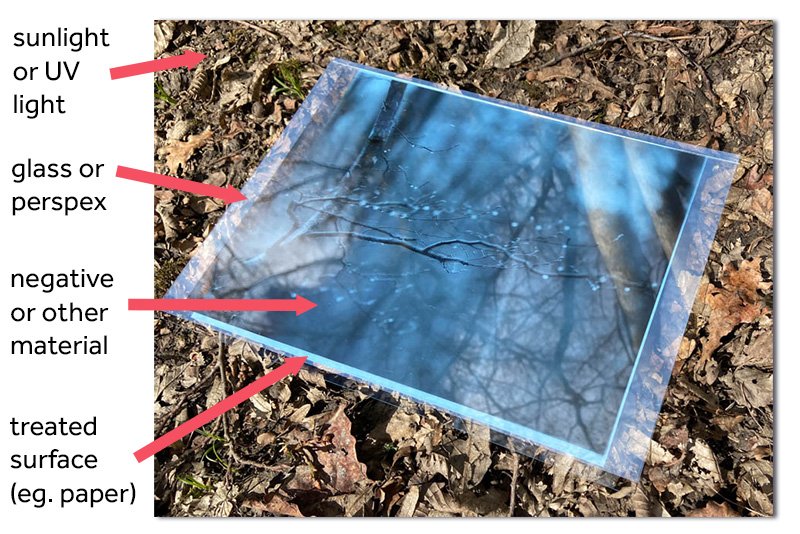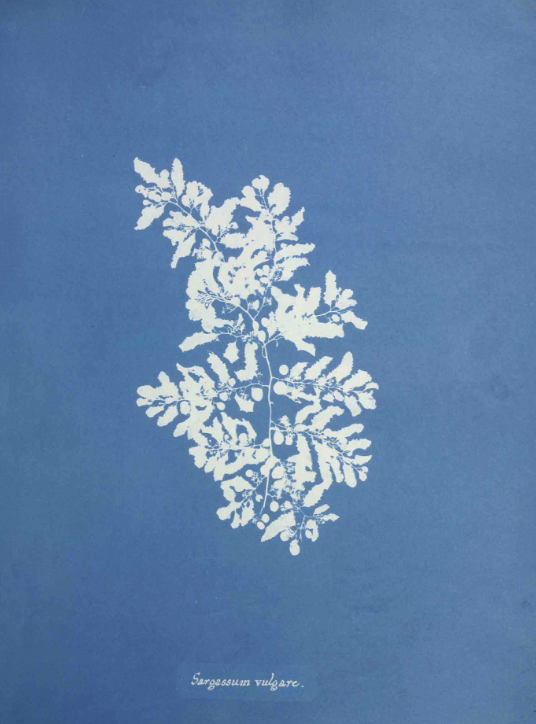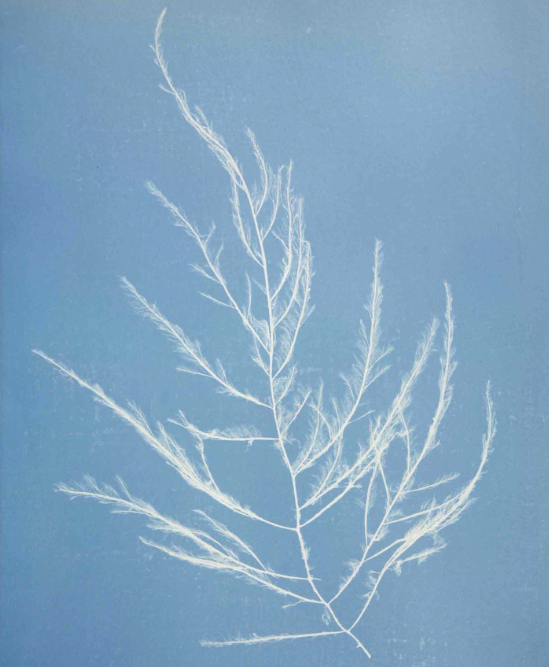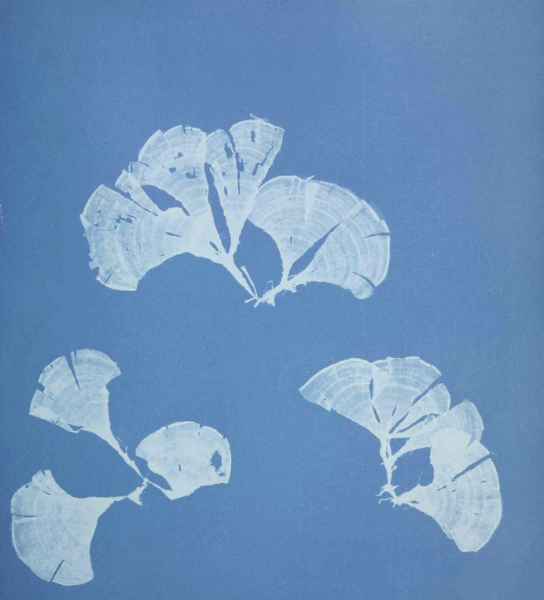Beginner's cyanotype photography
Cyanotype photographs are made by coating paper (or other surface) with a mixture of potassium ferricyanide and ferric ammonium citrate. You can buy ready-coated paper or you can prepare your own solutions and paper (see below for links and DIY details).
Any part of the treated paper that is exposed to sunlight (or UV light) will change colour. You can create photographs either by using photographic negatives or by placing objects (such as botanical elements) on the paper.
All you need to get started is cyanotype paper, a negative or a few leaves to make the image, a piece of glass or perspex to hold everything flat, a source of UV light to make the exposure and fresh water to rinse and fix the image once exposed.
For the image shown above I created my digital negative at home on my inkjet printer using digital transfer film and then made a simple contact print in direct sunlight. You can create beautiful images (or “photograms”) by placing leaves and botanical specimens on the paper and holding them steady with your glass/perspex, emulating the first photographer to do this, Anna Atkins:
Read more about Anna Atkins here. She produced the first book of cyanotypes in the 1830s and 40s. You can flick through here book online at the Natural History Museum here.
How long do cyanotypes take?
In bright sunshine a typical exposure is about 2-5 minutes. On a cloudy day it can take 10-20 minutes or more. You can tell when your cyanotype is ready because the paper goes very pale.
This site has some good information about timing differences in summer or winter.
World Cyanotype Day
The last Saturday in September each year is World Cyanotype Day. Join in and share your images on Instagram with the hashtag #cyanotypeday.
Supplies (not sponsored - just the things I used)
Pre-coated 8x10 paper: Parallax
You can coat your own paper or other surfaces: Parallax DIY supplies
Parallax have a comprehensive guide on how to prepare and coat your own surfaces: click to read.
Join A Year With My Camera
Emma’s beginner’s photography course is free to join by email. Join here and get started today:







